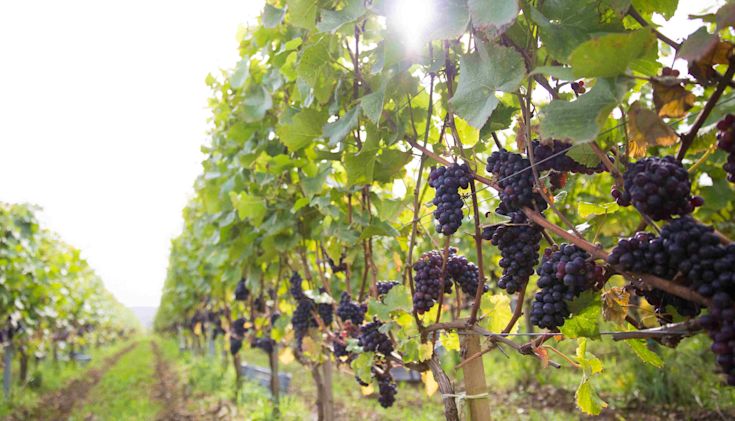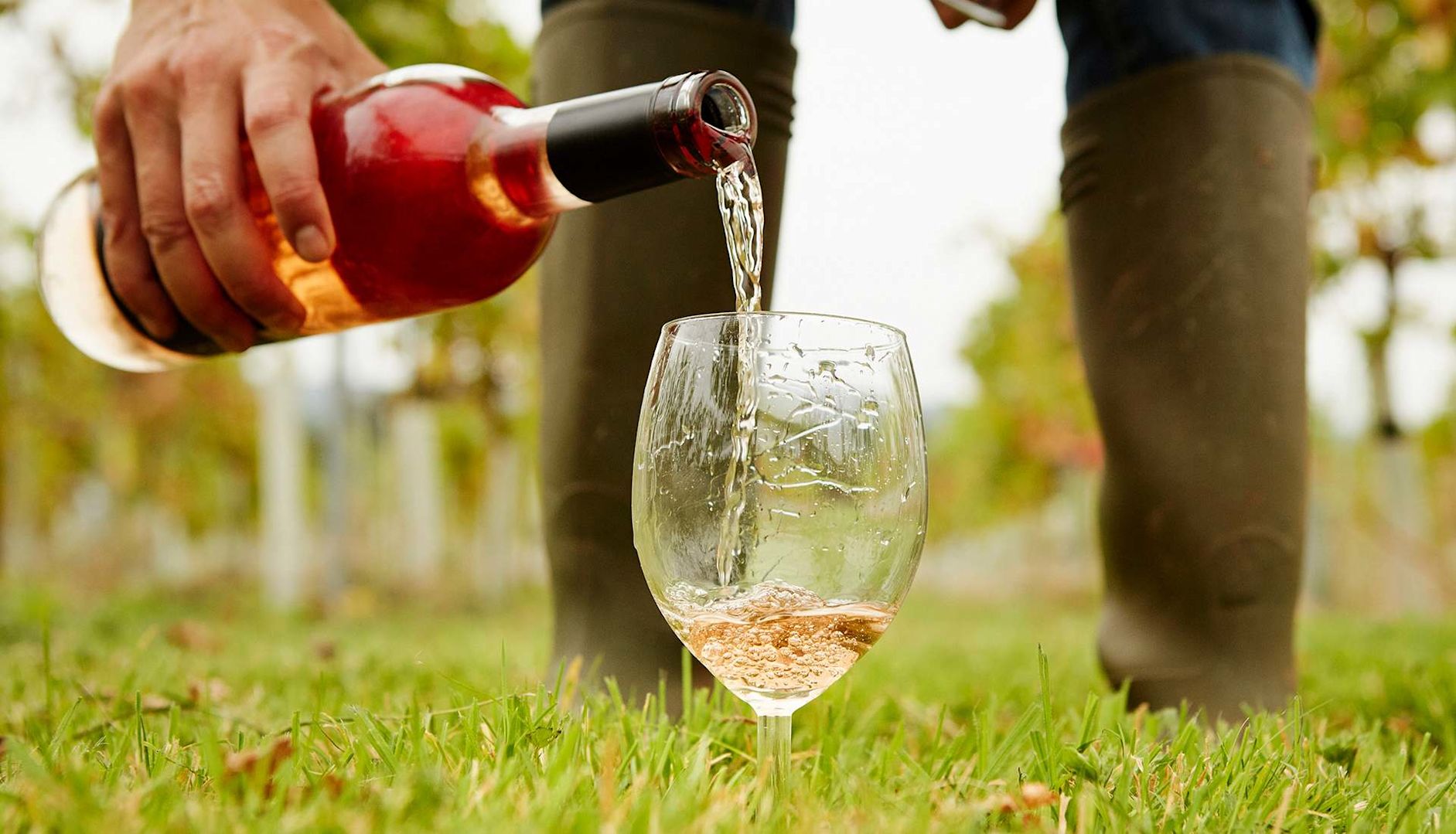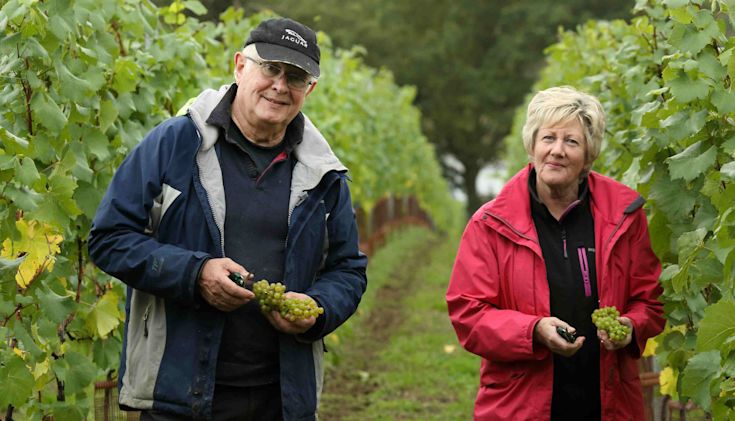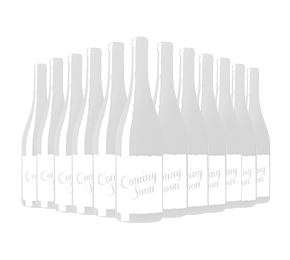Chat with Vinny
Now synonymous with quality and character, English wine is taking the wine world by storm. Read on to discover what to drink and why.
Is English wine popular?
It’s a bit like our cooking!
England and the winemaking world map haven’t historically gone hand in hand. But over the last 30 years that has changed dramatically. Quality and choice have exploded onto the world stage. English fizz led the charge but now our still wines are starting to hit the spot too.
Vineyards have proliferated throughout the UK in the last 20 years. And although the area of vines is still dwarfed by the historical wine-growing countries, the UK winemaking area is growing faster than in any of the top 25 wine-producing countries.
How long has England been making wine?
As John Cleese famously asked, “What did the Romans ever do for us?”
Well, apart from the roads and the aqueducts, they brought us vines. And while English wine may only have become mainstream over the last three decades, we’ve been making wine here for centuries. The Domesday Book recorded 45 vineyards in 1086 and mentions ‘Nitimbreha' - from which now world-famous Sussex fizz producer, Nyetimber (pictured) takes its name.
There are now over 900 vineyards in the UK. That is up 80% in the past five years or so. They cover around 10,000 acres and those acres are consistently producing over eight million bottles of wine a year. That is expected to rise to 40 million bottles by 2040.

Is English wine any good?
Yes – English wine can be very good. Just look at the awards!
If the Romans who planted England’s first vines were still around today, they couldn’t fail to be impressed by the quality being achieved.
You see, from just 10,000 acres of vineyards (compared to 1.9 million acres in France) the UK won a total of 143 medals at the 2023 Decanter World Wine Awards – cementing the reputation of English wine on the world stage.
And at the Global Sauvignon Blanc Masters in 2022 an English Sauvignon Blanc - from Woodchester Valley Vineyard – was rated as one of the very best in the world.
Which is no doubt why, in 2023, upmarket property consultants Strutt and Parker reported the number of people enquiring about either buying or establishing a new a vineyard has tripled.
In fact, English wine is so promising that the best vineyards can now sell for more than £35,000 for a planted acre. And world-famous sparkling producers like Taittinger, Pommery and Freixenet have all been eager to invest here.
Explore our range of award-winning English wine
So, what is the secret behind English wine's success?
To see why English wine is so successful, let’s look at the geography.
Vines grow successfully within the degrees of 30 and 50 either North or South of the Equator. Beyond either of those limits, it is either too cold or too hot.
So successful winemaking in English vineyards should come as no surprise when you think that London is on 51.506 N. Our most prolific vineyards are in Berkshire, Kent and Sussex in southern England. Compare that to Alsace on 48.330 N and Mosel on 49.037 N – as you can see, we’re in a similar sweet spot.
The second clue is beneath our feet: some magic soil composition. Much of southern England – the South Downs - shares the same chalky limestone as you find in Champagne. This lends itself particularly well to the grape varieties grown to produce sparkling wines.
As The Observer once reported: “England is regarded as one of the best producers of sparkling wine in the world.” And TV’s Mr Wine, Oz Clarke has said it is the closest thing there is to Champagne.

Did the Brits invent Champagne?
Yes – at least, we invented sparkling wine. Eat your heart out Dom Perignon!
Royal Society archives show that in December 1662, Englishman Christopher Merret delivered a speech on how to make wine “brisk and sparkling”, 30 years before Champagne’s most famous monk, Dom Perignon.
But how did we go from being a bit of an underdog to a serious competitor on the world stage and the first choice for many drinkers globally? Part of the success of English sparkling wine can be put down to the something that happened in the 1990s.
What exactly is the ‘Nyetimber effect’?
The Nyetimber effect is the English equivalent of the Judgement of Paris – when the top reds of Bordeaux were beaten by the upstarts of Napa Valley, California in a blind tasting. The reputation of Californian reds skyrocketed overnight.
The same happened in 1998, when 13 out of 14 judges thought the elegant glass of sparkling ‘blanc de blancs’ they were sipping was Champagne. And they awarded the wine the trophy for the best sparkling wine in the world. That wine was actually an English fizz, Nyetimber – and was delicious proof that England could hold its own against its French cousins.
England had the same soils, used the same grapes (Chardonnay, Pinot Noir and Pinot Meunier) and used the same technique (methode champenoise) to make its fizz. But English wine is now doing much more than just blowing bubbles at France’s sparkling spiritual heart. It’s a providing unique offering to the wine world.
What are the best grape varieties grown in England?
Many of the names of successful English grape varieties may not sound familiar to you.
This is because we are used to hearing about famous French grape varieties that are grown in warmer climates, like Cabernet Sauvignon, Syrah, Malbec or Merlot. But these grapes just won’t ripen here. If we made wines in the UK from these grapes:
The skins would not thicken enough to add deep colour to the wines.
The tannins wouldn’t soften (hard tannins will make your feel as though your tongue has been grated and your top lip is stuck to your teeth).
The grapes wouldn’t develop enough sugar, resulting in lean, bitter wines.
So, which red wine grapes do work in England?
OK, we can’t yet knock out the big blockbuster styles...
But if you’re feeling fruity, don’t make the mistake of thinking that Britain doesn’t have enough sun to make very juicy red, good quality reds.
Pinot Noir thrives in our slightly cooler climate, producing fruit-driven fragrant wines to savour with charcuterie or drink on their own. What’s more, it can be used to make not just delicious reds, but rosés, white wines and, of course, sparkling. As does the other black grape, Pinot Meunier.
Rondo grapes can produce a more full-bodied, ruby red wine. It’s a hybrid grape, first created in Germany in the 1960s – and it has an excellent ability to ripen in cooler climates. It also has a high resistance to fungi, reducing the need for fungicides.
We also have Dornfelder. Also originally from Germany, this grape is great because it’s able to fully ripen every year in England, no matter the weather, making delicious and fruity reds and rosé.

Which white wine grapes do work in England?
Here are the white grape varieties commonly grown in the UK:
Chardonnay – a key ingredient in English Sparkling wine.
Gewürztraminer – an aromatic variety, native to cool-climate Alsace.
Bacchus – England’s answer to Sauvignon Blanc, and some would say our signature grape.
Seyval Blanc – think Chenin Blanc or even Chablis – makes a well-balanced, fruit driven white with plenty of fresh citrus flavours.
Sauvignon Blanc – extremely popular as a white wine style in the UK, but extremely rare as a grape variety – for now!
Pinot Gris/Grigio – Italy’s famous white, now working well here: crisp, refreshing with distinctly English hedgerow aromas.
Müller-Thurgau – a cross between Riesling and Madeleine Royale, it makes a zesty pale yellow/green white with an almost spicy aroma.
Madeleine Angevine – a grape originally from the Loire Valley that makes a lovely, soft, delicately floral white.
Reichensteiner – a grape that was produced by crossing Muller-Thurgau with Madeleine Angevine and delivers gentle, light, fragrant, slightly smoky wine.
Schönburger – this pink-skinned variety is thriving in southern England , making light, grapey wines.
Ortega – first planted in England in the 1970s, but originally from the Mosel, it ripens early and its high sugar levels makes it a good candidate for dessert wines.
The future is Rosé
There really is no better time to be drinking and enjoying all English wine has to offer.
TV wine presenter and best-selling author Oz Clarke firmly believes we are in the golden age of British winemaking. The UK has hit her stride, with English sparkling landing us firmly on the fine wine map. However, he is tipping his glass to pink wines doing best of all over the next two decades. The English climate will allow for excellent rosé wine to be produced from red grapes which – at the moment - have not fully ripened yet.
To quote Oz Clarke: “I would prefer English to Provence as my rosé thirst quencher any day.”

Laithwaites and English Sparkling wine
Laithwaites has a long history of flying the flag for English wines, particularly its fizz.
We championed the Roberts family and their multi award-winning East Sussex estate, before it was famous. Today, Ridgeview is regarded as one of the UK’s finest wineries. The late, great Mike Roberts was hailed in the press as our very own ‘King of Fizz’. Their sparkling wines have been served at State Banquets and Royal birthdays. And they have won more awards than you can shake a stick at. Yet they still make a special cuvée, South Ridge, exclusively for our customers.
Tony Laithwaite personally helped revive the royal vineyard in Windsor Great Park (to worldwide acclaim). His wife Barbara makes the trophy-winning Wyfold wines, while son Henry is racking up the medals at Harrow & Hope in Marlow, for his white and rosé sparkling wines.
Discover more about English Sparkling Wine in our beginner's guide.

About the author
Richard Bull
Although good at running up hills, Richard failed to make the military cuvée and turned instead to the drinks trade. After stints at Hennessy, Oddbins and Grants of St James, he arrived at Laithwaites. Here, he spent 15 years writing about real wine and the people who make it. As he wrote from the desk to your door, he was lucky enough to visit vineyards in France, Italy, Spain and Kent - as well as being flown over South Africa's Breede River by a winemaking army veteran who'd just had a heart attack. Qualified to WSET Level 3, he loves the off-the-beaten track reds of the Languedoc, but is currently obsessed with all drops Greek - particularly their super crisp whites.

